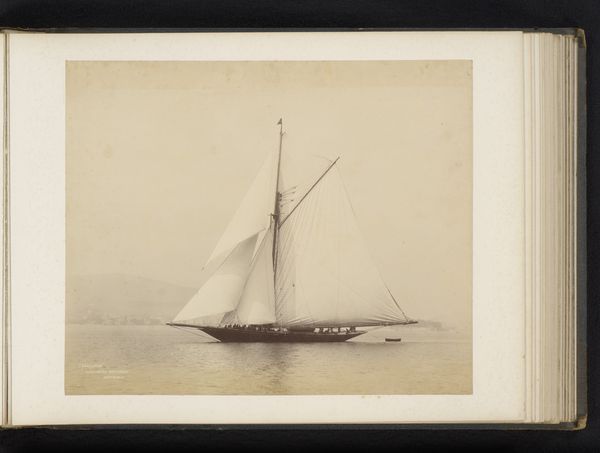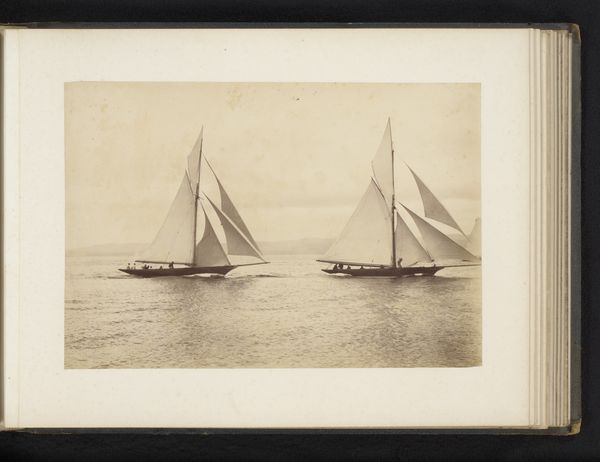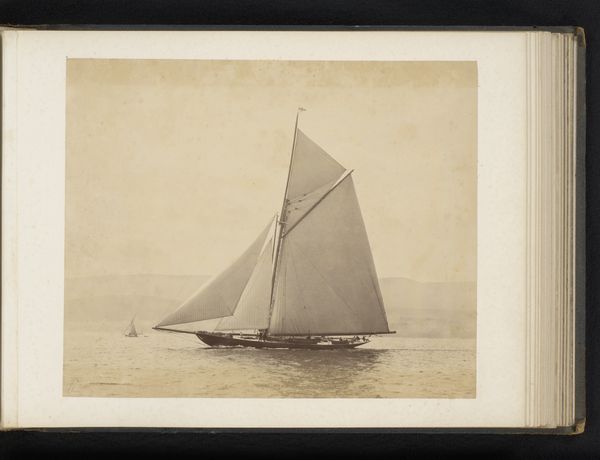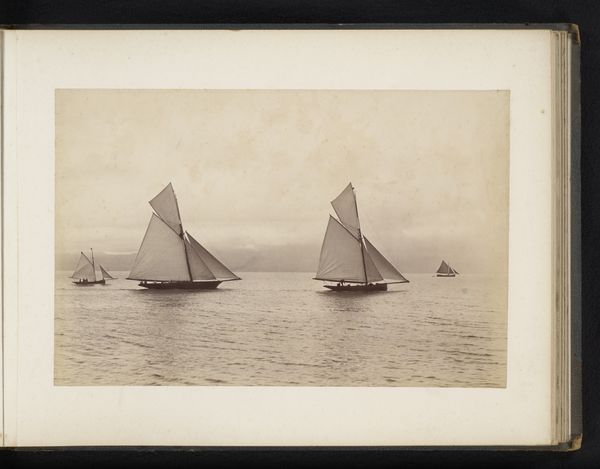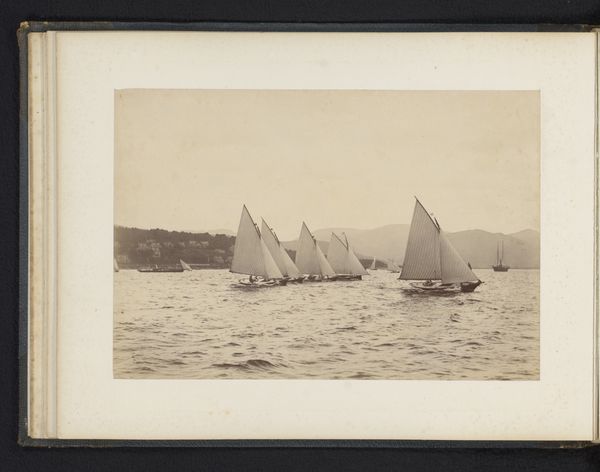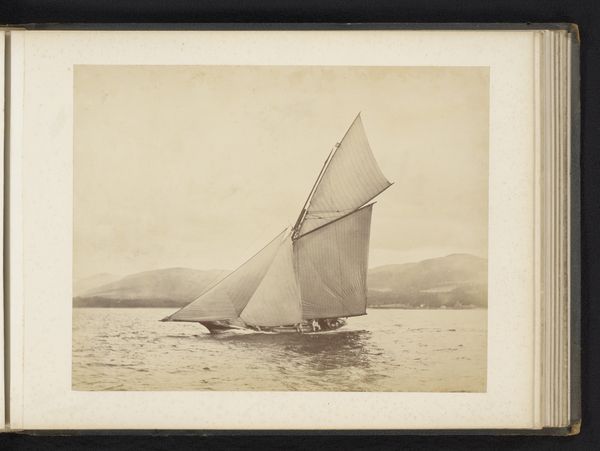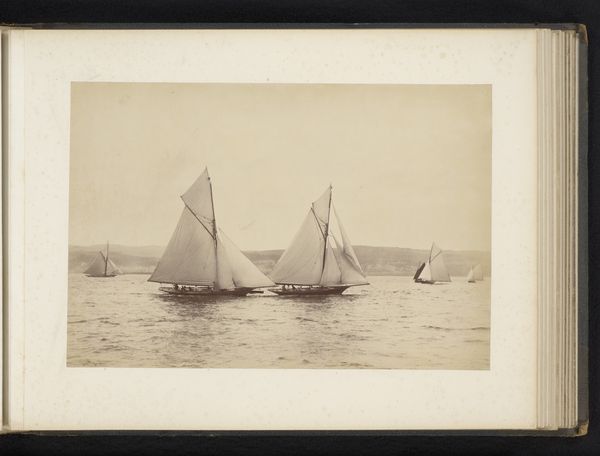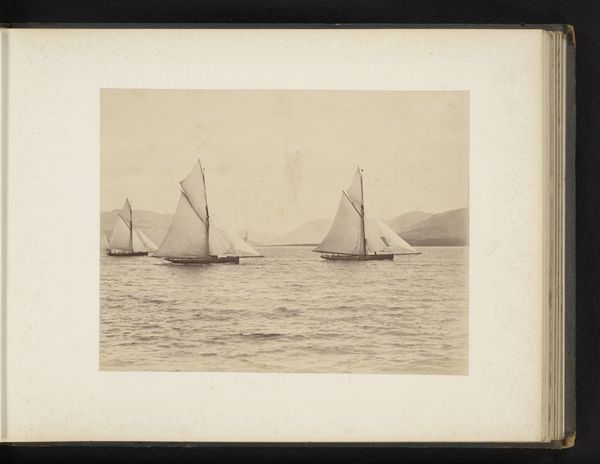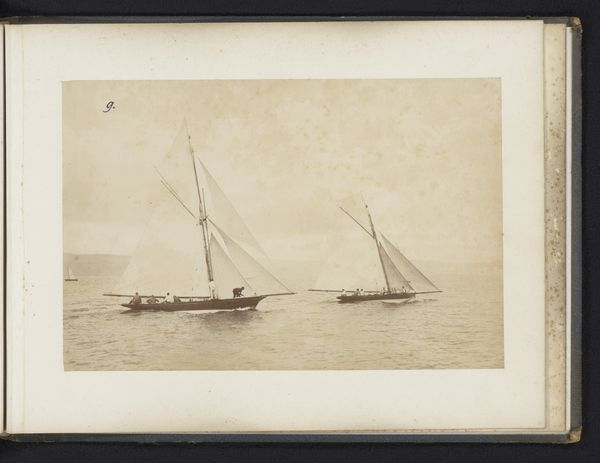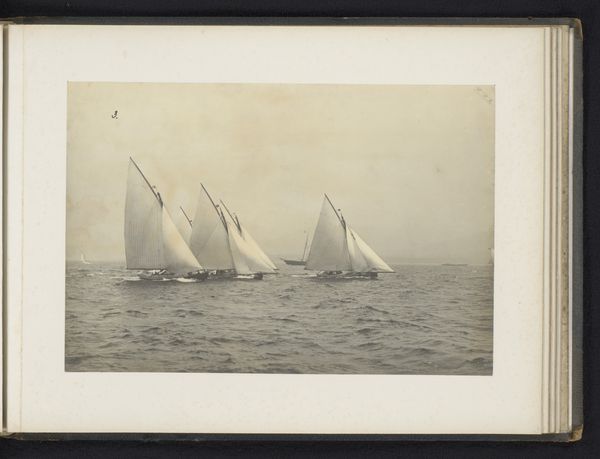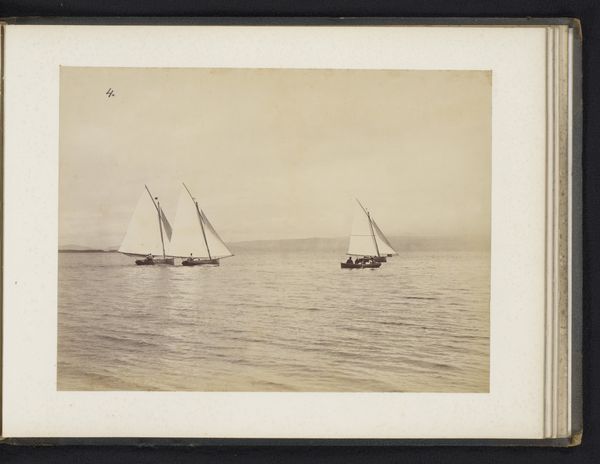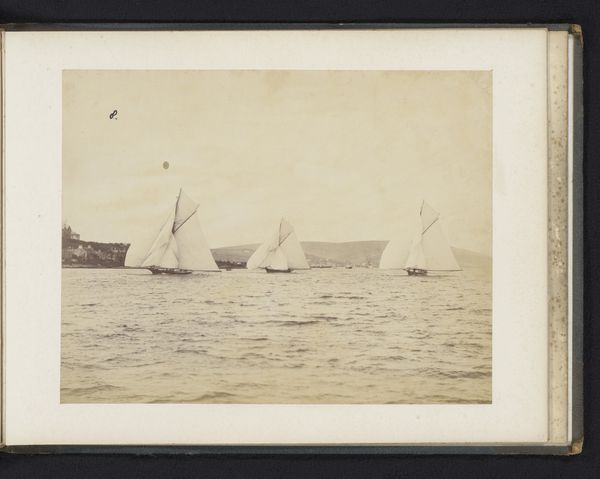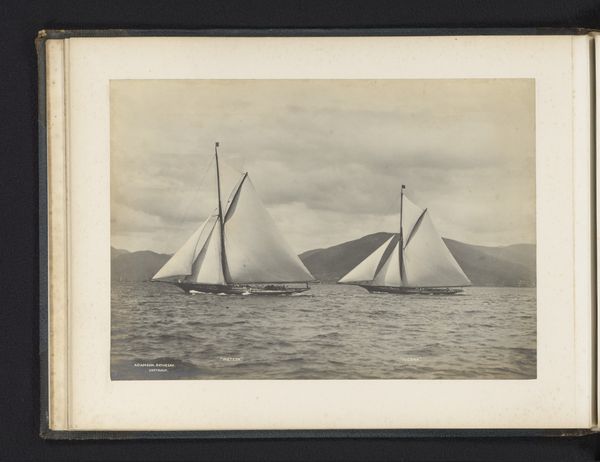
photography
#
still-life-photography
#
pictorialism
#
landscape
#
photography
Dimensions: height 213 mm, width 277 mm
Copyright: Rijks Museum: Open Domain
Editor: This photograph, “Zeilschip Valkyrie No.1 te water”, taken sometime between 1880 and 1900, gives me a sense of serene elegance. It’s simple, almost monochromatic, but the lines of the sailing ship are really captivating. What strikes you about it? Curator: I see here the burgeoning role of photography in shaping public perception of leisure and national identity at the turn of the century. Note how the Valkyrie yacht, likely owned by a member of the elite, is captured in a painterly style characteristic of Pictorialism. The soft focus and tonal range elevate the yacht from mere transportation to a symbol of wealth, technological prowess, and national pride, particularly potent considering the context of burgeoning industrialization. Does the choice of subject matter hint at the sociopolitical leanings of art institutions and patrons of that time? Editor: That’s fascinating. It's not just a boat, it's about the statement it makes about the owner's status, captured through an artistic lens! Were these kinds of photographs common in galleries, or would it mostly be painting and sculpture showing these subjects? Curator: Initially, photography fought for acceptance within established art circles. Pieces like this, mimicking painting, became vital in securing legitimacy for photography as an art form exhibited in galleries and collected by wealthy patrons. Consider too how widespread visual representations shape public opinion of who wields power. Who do you imagine would view this image and how might it shape their views about class and social status? Editor: So, it's a carefully crafted image designed to appeal to certain tastes and subtly reinforce certain social hierarchies? I never would have thought of a sailing photograph that way. Curator: Exactly! The context truly transforms how we perceive an artwork like this, doesn’t it? Editor: Absolutely. I appreciate this new perspective and what to consider!
Comments
No comments
Be the first to comment and join the conversation on the ultimate creative platform.
